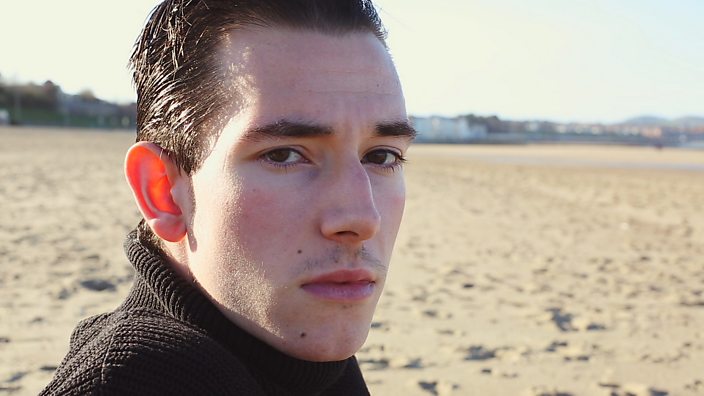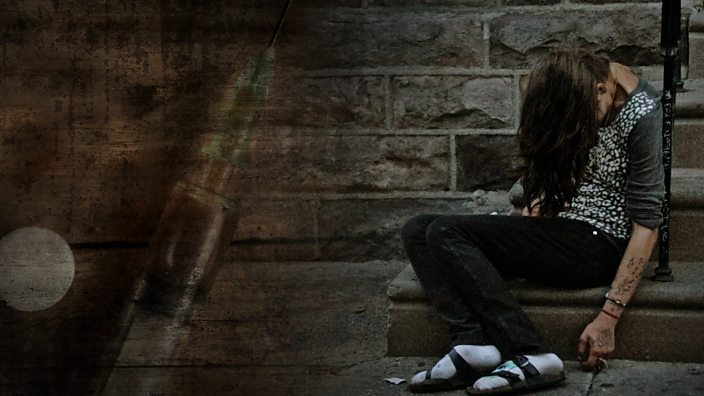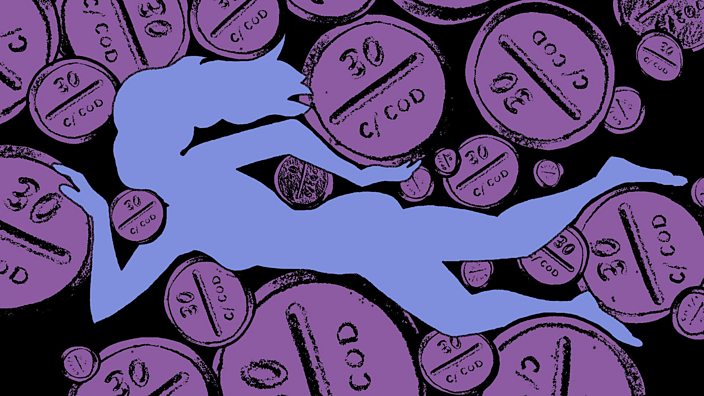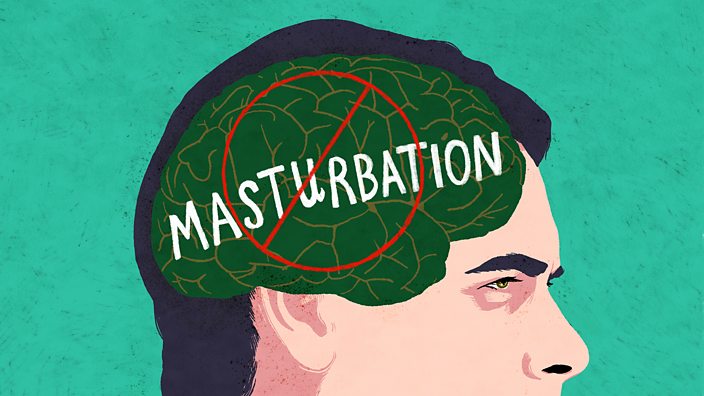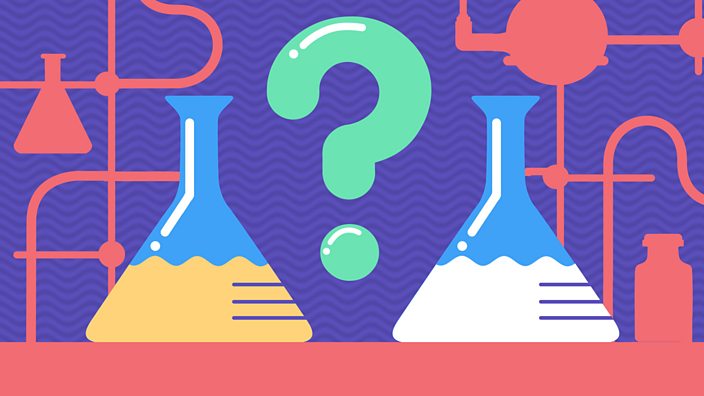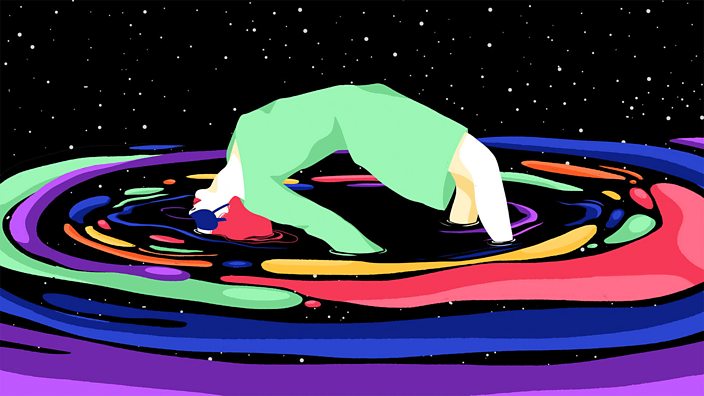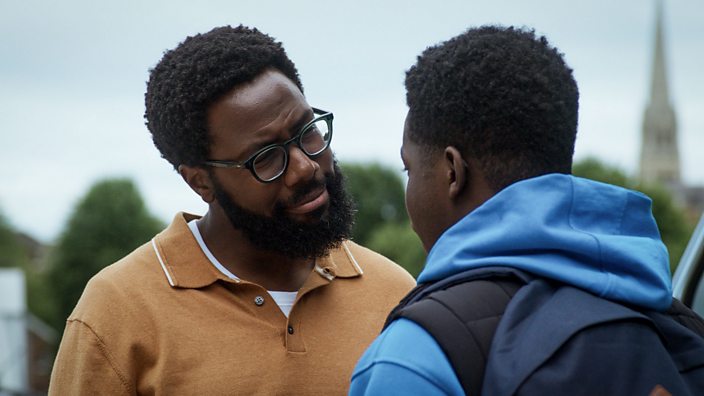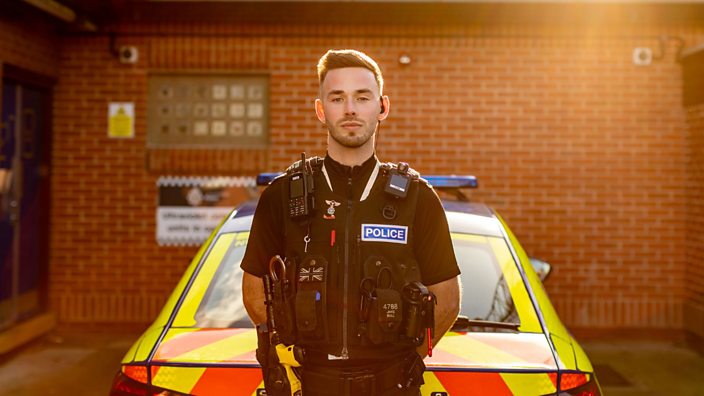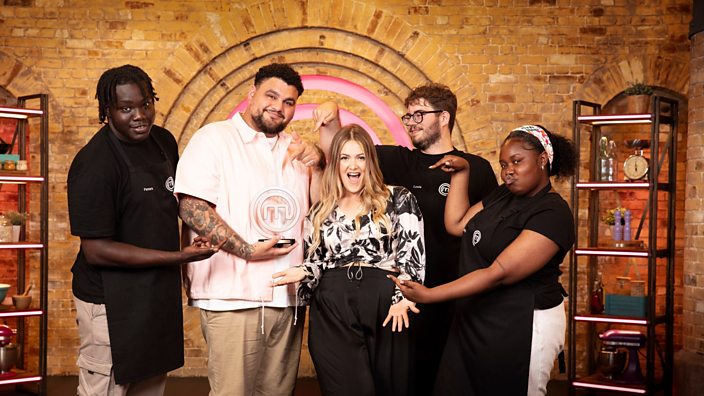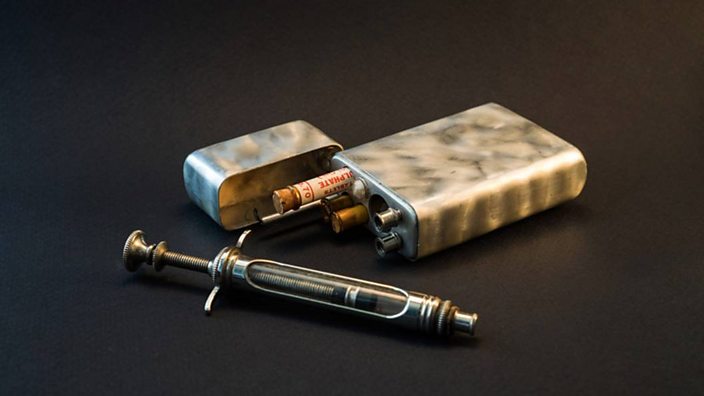 Philippe Bonnet
Philippe BonnetCocaine for soldiers & opiates for teething babies: exploring the history of drug use
Philippe Bonnet is a collector of antique drugs paraphernalia. He talks us through the history of drug use in eight objects.
I’ve always been fascinated with drug culture and trends.
It’s amazing to think that, once upon a time, all of these drugs were legal. A hundred years ago, you could walk into a pharmacy or department store and buy cocaine, heroin or morphine. And when you think about how some of these products were advertised, it’s very surreal.
 Philippe Bonnet
Philippe Bonnet
I began collecting vintage drug paraphernalia 30 years ago. I have over 500 pieces (and counting), from around the world: England, Ukraine, Italy, Australia, Poland, Russia and America. The collection is displayed in a glass cabinet and anyone who comes into our house spends hours just staring at it. It’s pretty ‘wow’. I have no idea how much I’ve spent – it’s in the thousands. Luckily, my wife is extremely supportive – I’m currently putting together a coffee-table book featuring photographs of my collection, which was her idea.
Every piece tells a story. Here are some of my favourites…
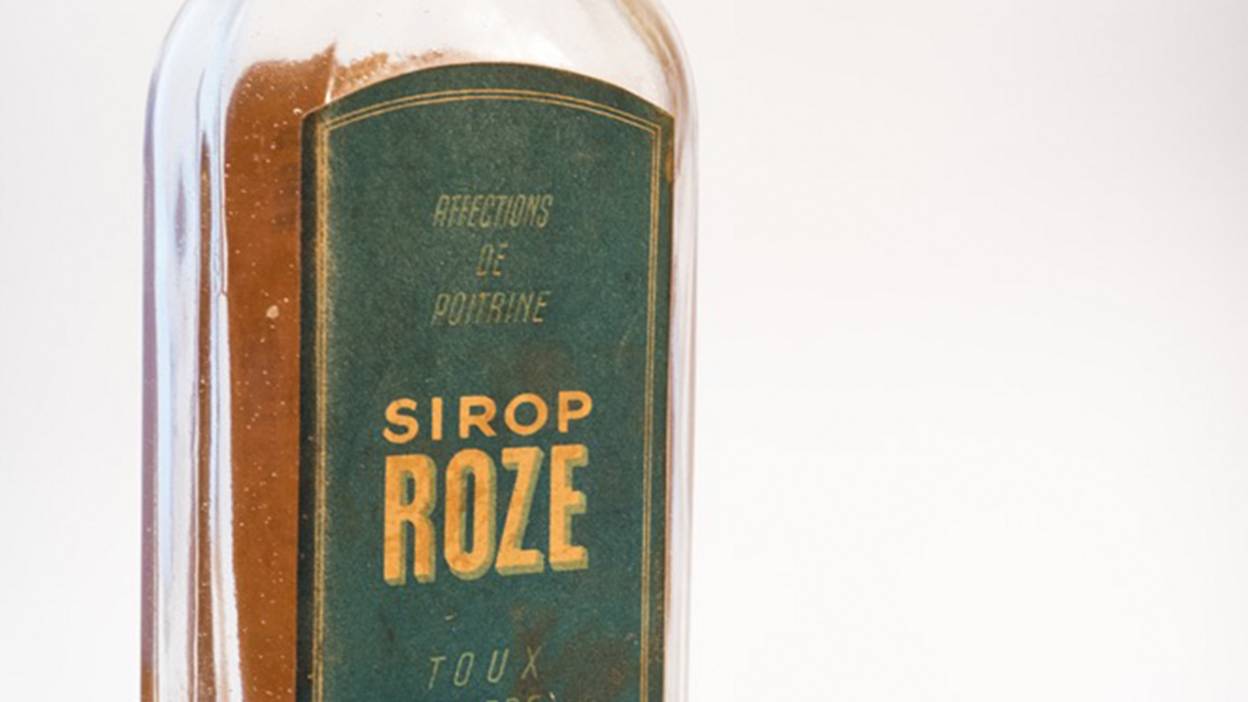 Philippe Bonnet
Philippe Bonnet
This was the first piece I ever bought, 30 years ago. I was in an antique shop in France and spotted this old bottle of cough medicine. Sirop Roze contained opium, codeine, datura and chloroform. What a cocktail.
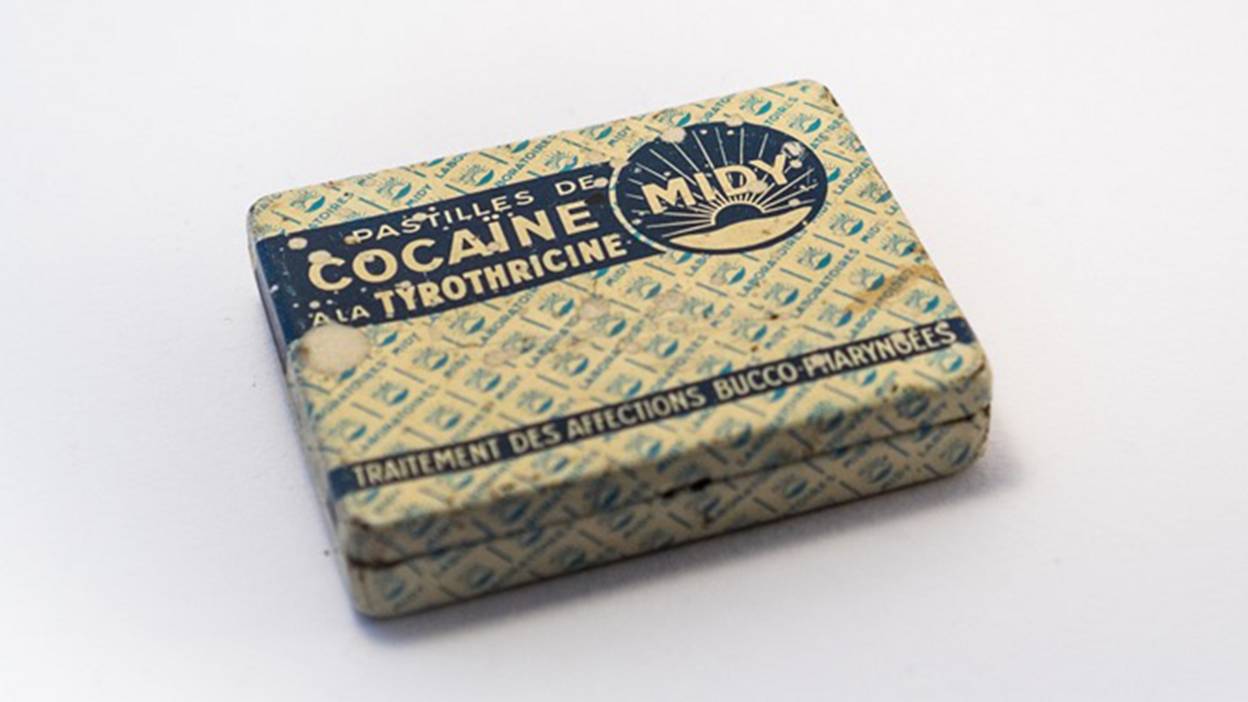 Philippe Bonnet
Philippe Bonnet
This 50p tin was tucked away in an old cabinet – the word ‘cocaine’ just jumped out at me. In the 19th century, cocaine was used for medicinal purposes, as a local anaesthetic in dentistry, eye surgery and minor operations, and in lozenges and pastilles to relieve a sore throat. For years, cocaine voice tablets were advertised to public speakers and singers, said to remove vocal huskiness or hoarseness.
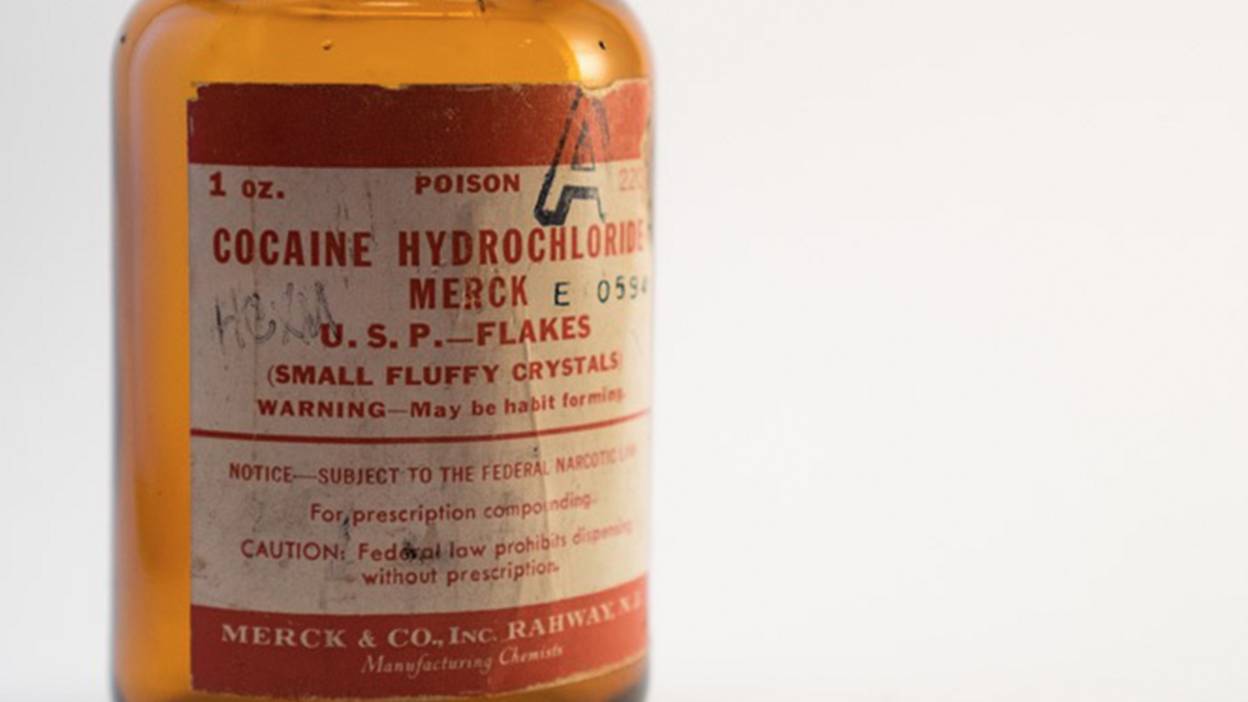 Philippe Bonnet
Philippe Bonnet
This is one of the most prized pieces in my collection. The label is still intact and reads: ‘small fluffy crystals’. Merck cocaine is what the Rolling Stones did in the early 70s. Keith Richards said in his autobiography that the Rolling Stones’ 1975 tour was “fuelled by Merck cocaine”. Apparently, they built hideaways behind the speakers on stage so they could have lines between songs.
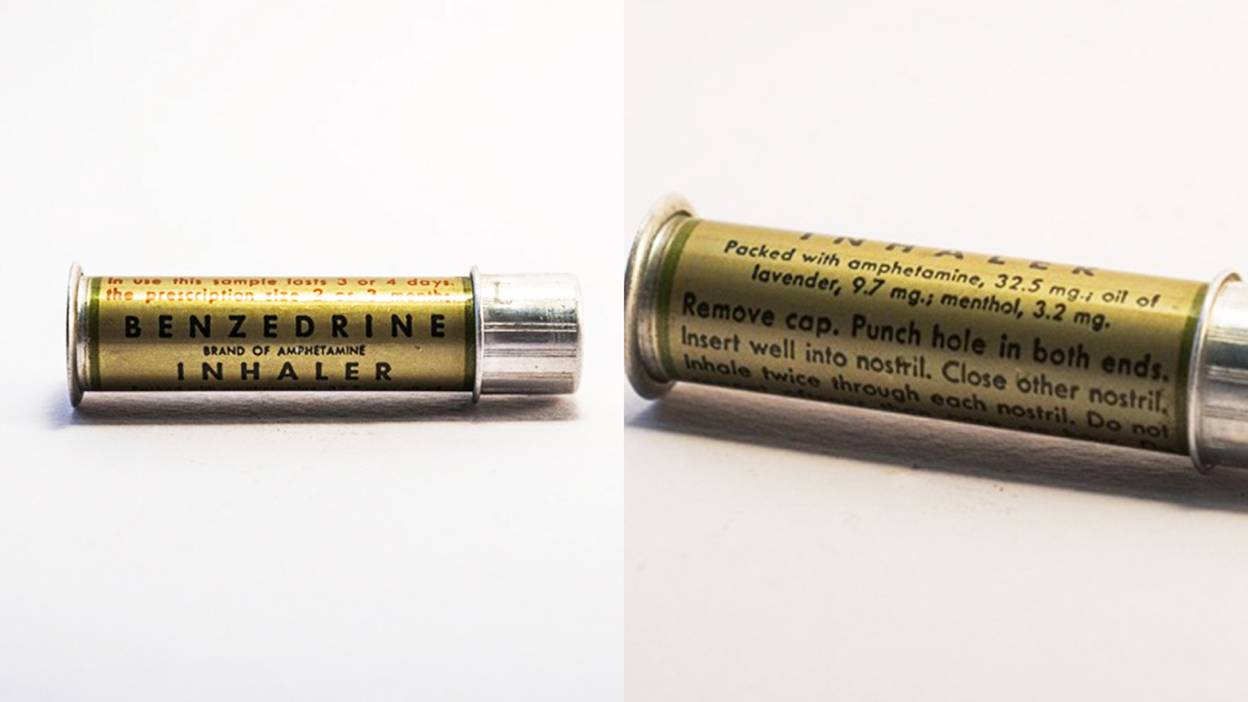 Philippe Bonnet
Philippe Bonnet
Benzedrine inhalers were made for people who suffered with hay fever, asthma or a blocked nose. Each inhaler was 'packed with amphetamine' – I can’t believe it actually uses the word 'packed'! A wad of gauze inside held 32.5 grams of benzedrine. People would crack the tube open, chew on it and swallow it, or mix the benzedrine with water and inject it. The Jazz musician Charlie Parker used to put it in coffee. Benzedrine was also popular with the Beat Generation – a group of authors, whose literature explored and influenced American culture in the 1950s, including Jack Kerouac and Allen Ginsberg.
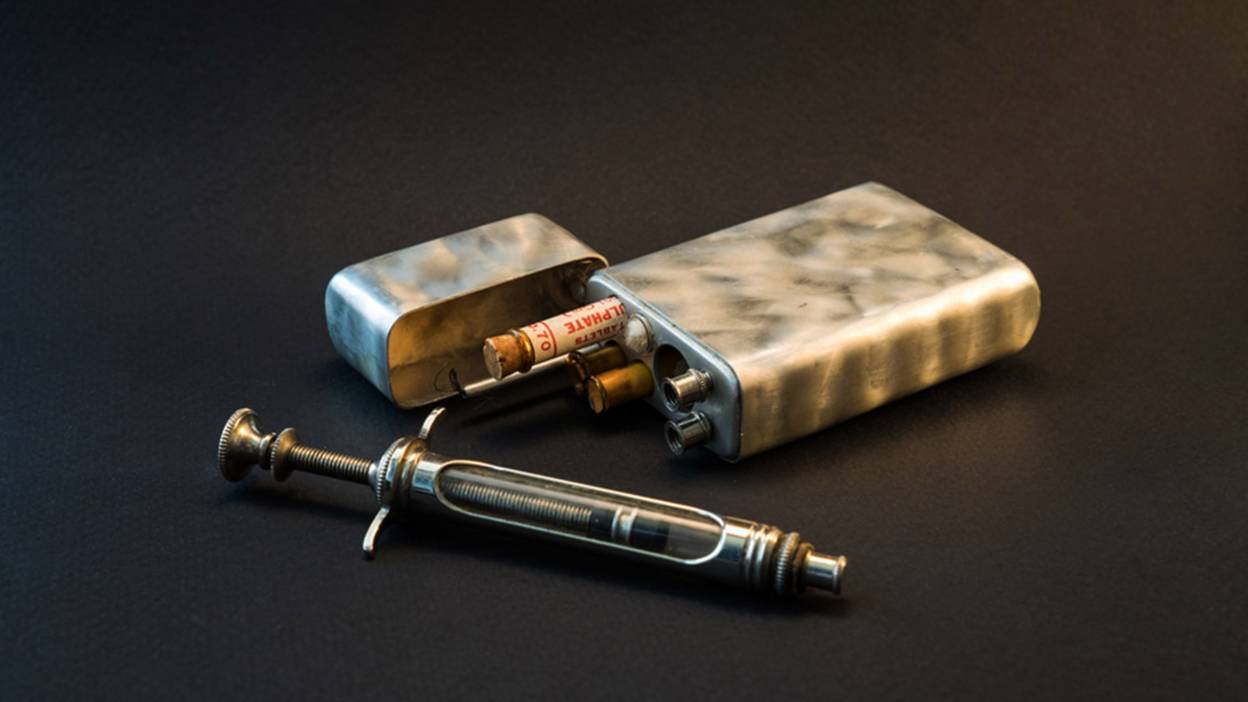 Philippe Bonnet
Philippe Bonnet
During the First World War, department stores, including Harrods, sold kits containing syringes, needles and tubes of cocaine and heroin. It was promoted as a present for friends on the frontline – shoot up to make life in the trenches more bearable and alleviate the horrors of war. As soon as I saw this injecting kit, I bought it then and there for a hundred quid.
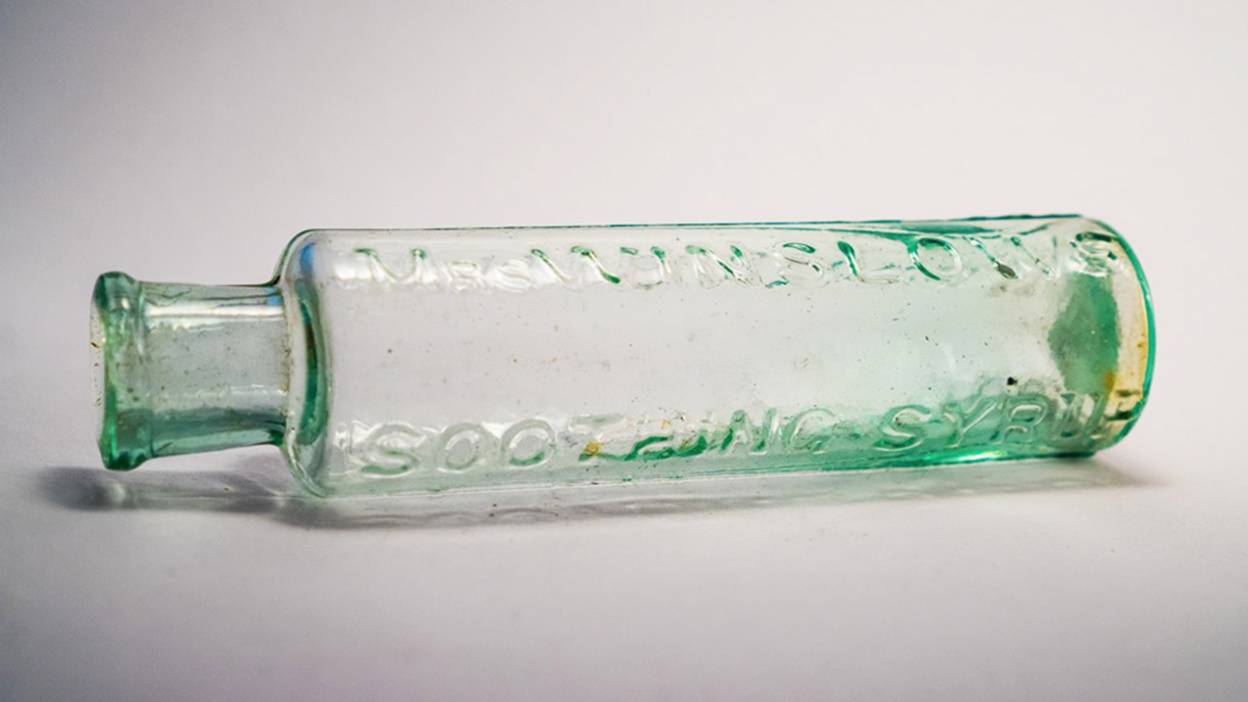 Philippe Bonnet
Philippe Bonnet
In 19th century America, fake doctors travelled around the country, peddling ‘miracle elixirs’ also known as ‘snake oil’. They claimed the potion could cure anything - from diarrhoea to the chills to a raging fever; some even said it prolonged life! These ‘miracle cures’ were often laced with morphine or opium and sold at ‘medicine shows’. Men posed as doctors and drew crowds by giving rousing speeches, then dancers, acrobats, magicians, musclemen and exotic performers continued to keep the crowd entertained while sales were made. ‘Your Song’, by Elton John, mentions a man who makes ‘potions in a travelling show’.
 Philippe Bonnet
Philippe Bonnet
In the 1800s, Mrs Winslow's Soothing Syrup was allegedly responsible for the death of babies in America. Marketed a ‘miracle cure’ to ease the pain of teething tots, parents didn’t realise the syrup contained morphine and it’s thought many infants died of an overdose. So-called ‘medicines’, featuring morphine and opium, were often packaged in pretty bottles and given a quaint, home-remedy name.
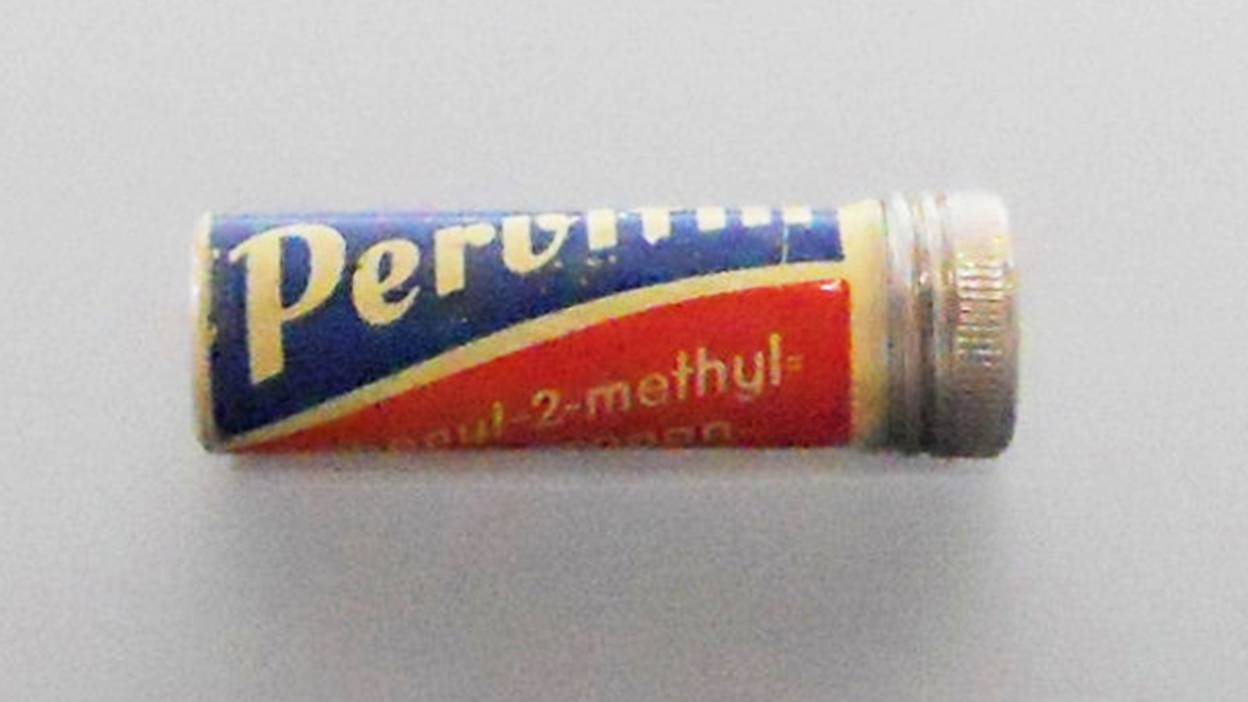 Google
Google
Pervitin is a methamphetamine-based drug, which was manufactured by the Nazis and given to the German armed forces during the Second World War. It kept soldiers, tank drivers and the Luftwaffe alert and fighting for longer, as well as simulating feelings of euphoria. Before advancing on France in 1940, the German army ordered 35 million tablets of Pervitin. British, French and American troops were also were given amphetamines to combat fatigue; the American military alone distributed around 200 million tablets.
I’ve been looking for a Pervitin tube for 20 years but haven’t managed to get my hands on one yet. I got so excited last week when I saw two tubes for sale on eBay, but sadly it was out of my price range. The search continues.
Originally published 15 April 2016.
